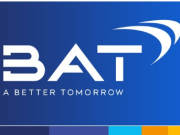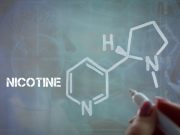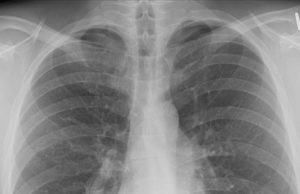Nicopure’s General Counsel Patricia Kovacevic dissects, in a webminar, the basics of the FDA’s new e-cigarette regulations. In the target of the expert, the Deeming Rule.
During 50 minutes P. Kovacevic covers 4 major themes and answers questions:
- Overview of FDA Regulatory Authority over Vaping Products
- Upcoming FDA Regulation of Vaping Products
- Premarket Authorization of Tobacco Products
- What are “product standards” under TCA?
Overview of FDA Regulatory Authority over Vaping Products
The tobacco products, under the Tobacco Control Act (TCA) are “any product made or derived from tobacco that is intended for human consumption, including any component, part or accessory of a tobacco product (except raw material other than tobacco used in manufacturing a component, part or accessory of a tobacco product).” She adds that the term “tobacco product” is not synonym of drug, device or any other combination product.
Since 2009, TCA applies to cigarettes, cigarette tobacco, RYO tobacco and smokeless tobacco. The TCA empowers the FDA to regulate other tobacco products by issuing regulations or rules. A federal court, in 2010, ruled that e-cigarettes couldn’t be regulated as drug/device but had to be regulated as tobacco products, under the TCA.
Upcoming FDA Regulation of Vaping Products
Why are vaping products a tobacco product under the TCA?
FDA takes the view that vaping products are a tobacco product since they contain nicotine or other ingredients derived from tobacco.
What is the status of the FDA Deeming Rule?
The proposed regulation (i.e. the Deeming Rule) was published by FDA in April 2014 and was followed by a period for comments until August 2014.
The Final Deeming Rule is expected to be published in the short term under its final form.
P. Kovacevic notices, even if very unlikely, that legal challenges (lawsuits) may delay implementation of some or all parts of the rule.
What are the basic TCA requirements for vaping products implemented through the Deeming Rule?
The basic requirements for vaping product are already in the TCA and most of them are the same as for current tobacco products:
- Registration with FDA of manufacturing and importing facilities,
- Manufacturers/importers must file a product list twice a year, including packaging and marketing materials,
- Provide FDA with a list of ingredients,
- Provide Harmful and Potentially Harmful Constituent information,
- Modified risk/exposure descriptors cannot be used,
- Prohibition against adulteration and misbranding,
- Health warnings on packs (specific for nicotine-containing vaping products),
- Sales are thought to be restricted to 18+ (21+ in Hawai’i) only (very likely – subject to Final Rule),
- FDA will likely carry out inspections of manufacturing and importing facilities (likely – subject to Final Rule),
- Ban of free product sampling; vending machines restricted to 18+ venues (subject to Final Rule),
- Some form of product premarket authorization should be files most likely within two years (subject to Final Rule)- requires research, and a team of specialists.
Premarket authorization of tobacco products
Generally, manufacturer or importer must submit application to FDA and receive approval before introduction into the interstate commerce or “marketing the product” as FDA calls it. There will be a grace period for products currently on the market (likely two years -subject to Final Rule).
The FDA provides with only three approval pathways:
- PMTA (premarket tobacco authorization) for “new-new products”, also terme the “full” premarket authorization (Section 910(a)),
- must submit full application including clinical and non-clinical studies (910(b))
- FDA must act within 180 days of receipt (910(c)), but FDA can also reject PMTA application right away through a “refuse to file” letter, if information is not sufficient for their services.
- Substantial Equivalence Application (Section 905j report) for products substantially equivalent to an existing tobacco product,
- It requires a Substantial Equivalence Report:
- demonstrating that the product is identical to the product marketed before February 15, 2007 or,
- demonstrating an equivalent product has already been approved by the FDA (“predicated product”)
- Actions the manufacturer has taken to comply with any applicable standards (none are applicable to vaping products at present).
- It requires a Substantial Equivalence Report:
- Minor Modification Exemption (Section 905j (3)) when quantities of a additive increases or decreases, for example.
What is a New Tobacco Product?
It is a tobacco product that:
- Any tobacco product that was not commercially marketed in the US as of February 15, 2007. Including those products in test markets
- Any modification of a tobacco product where the modified product was commercially marketer in the US after February 15, 2007. Including a change in design, any component, any part, or any constituent, or in the content, delivery or form of nicotine, or any other additive or ingredient
What is a Substantial Equivalence or “substantially equivalent?
 It is a product, compared to a tobacco product or a predicated tobacco product, that FDA found:
It is a product, compared to a tobacco product or a predicated tobacco product, that FDA found:
- having the same “characteristics” (materials, ingredients, design, composition, heating source, or other features of a tobacco product) as the predicated product,
- having different characteristics and not raising different questions of public health.
The TCA requires some the premarket authorization for ALL tobacco products, and therefore those requirements will be applicable to vaping products as well. FDA will allow a period of time for all manufacturers/importers to file some forms of premarket authorization as a precondition to keep products on the market. It seems very unlikely that the Deeming Rule calls for an immediate withdrawal of all the vaping products currently available on the US market.
![]() Upon the publication of the Final Deeming Rule, another webminar will be held in order to go through the details on this text.
Upon the publication of the Final Deeming Rule, another webminar will be held in order to go through the details on this text.
What are the product standards under the TCA?
It is a novel standard and only applicable to tobacco products. TCA FDA has the authority to issue product standards which could include standards relating to:
- Nicotine yields, reduction or limitation of certain constituents
- Testing requirements
- any other aspect of tobacco products











